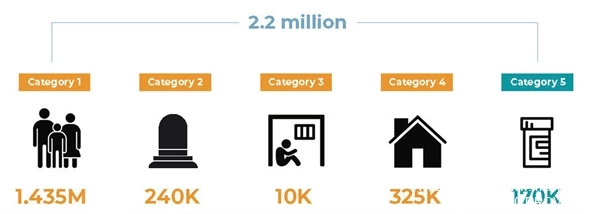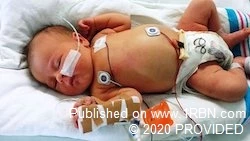Kids Are Hidden Casualties of the Opioid Epidemic


Photo by PROVIDEDAn estimated 2.2 million children have been affected by the opioid epidemic.

Photo by PROVIDEDA baby suffering from opioid withdrawal is born approximately every 15 minutes.
In 2018, over 168 million prescriptions for opioid painkillers were filled in the United States. That’s enough dangerously addictive medication for half the U.S. population. Along the way, the opioid crisis has already destroyed an untold number of lives, including those of children who were born addicted, abandoned by their parents, or both.
A staggering 2019 report estimates that 2.2 million children and adolescents had a parent with opioid use disorder (OUD) or had OUD themselves. If these trends continue, an estimated 4.3 million children will have had OUD – or a parent with OUD – by 2030.
The Lost Children of Addicted Parents
The most common way children are affected by opioid use is by having a parent or guardian who abuses opioids. This may mean the child lives with their opioid-using caregiver, the caregiver is incarcerated or in a rehabilitation facility, the child lives with a different family member or is in foster care, or the caregiver has died because of an overdose.
Compared to their peers, these children face dire consequences well into their adulthoods – 30% are more likely to be arrested, they are twice as likely to be depressed, and they are three times more likely to start abusing drugs and alcohol themselves. Around 75,000 displaced kids will enter the foster care system every year, and that number is expected to grow. At least 70% of states report more children entering foster care since 2012 due to parental substance use, particularly opioids and methamphetamines. These children also represent an enormous, yet preventable, cost to society – an estimated $117.5 billion in health care, special education and child welfare services, along with another $62.1 billion needed during adulthood.
Children Born Addicted
Neonatal abstinence syndrome (NAS) occurs when a baby suffers opioid withdrawal at birth due to a mother who is using opioids. The Centers for Disease Control reports that anywhere from 14% to 22% of women fill an opioid painkiller prescription during pregnancy, while instances of NAS have quadrupled since 1999. Babies born with NAS can suffer from these dangerous conditions at birth and throughout the rest of their lives:
-Tremors or seizures
-Difficulty eating and gaining weight
-Respiratory issues
-Intestinal issues
-Developmental or learning disabilities
-Loss of vision
-Motor skill delay
-Memory or focus delay
Fight for a Future Generation
We can successfully fight opioid addiction and protect our children from the opioid epidemic. Drug overdose deaths fell in 2018, the first decrease in fatalities since 1990. Some experts believe this downward trend was due to tightened restrictions on opioid prescriptions, greater public awareness of the deadly risks of opioid addiction and increased access to treatment. However, numbers bounced back up last year, and 2020 could be even worse. So far, there has been a 13 percent increase in drug overdose deaths compared to last year, with many blaming the coronavirus pandemic and a troubled economy for increasing the risk of substance use.
In an effort to hold Big Pharma accountable, many states, cities and counties are also holding opioid manufacturers accountable in court for false marketing and harmful disregard for the addictive risks of their products. The first of over 2,700 lawsuits was decided earlier this year. A judge ruled in favor of the state of Oklahoma and required Johnson & Johnson to pay a $465 million verdict in an effort to fund treatment and prevention programs for those affected by the opioid epidemic. It's a good start, but we have a long way to go. Future generations are depending on us to get it right.








